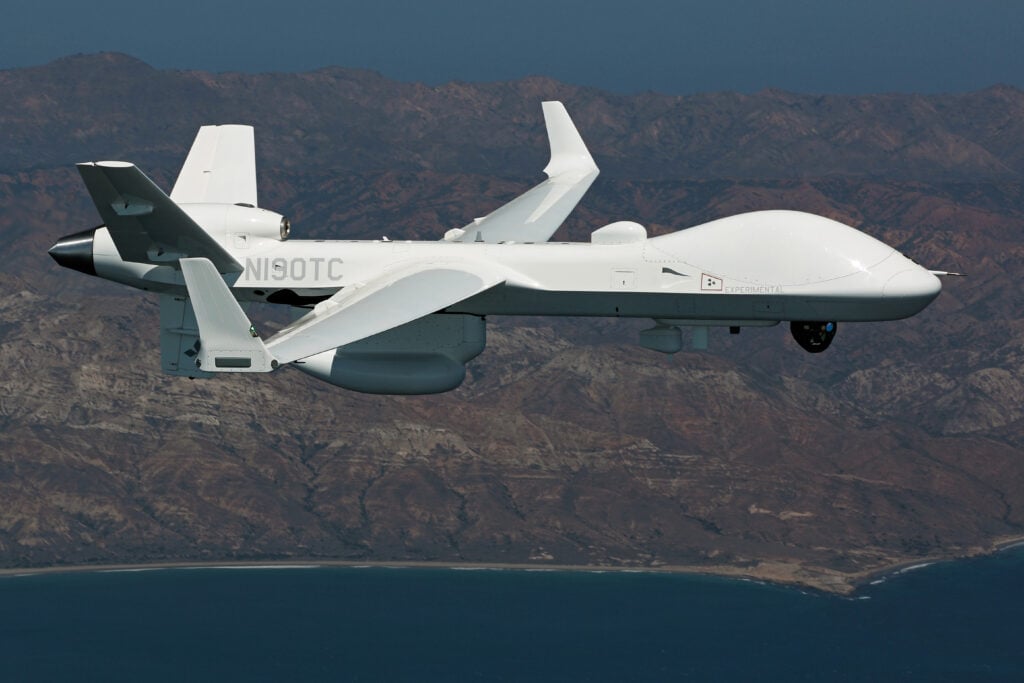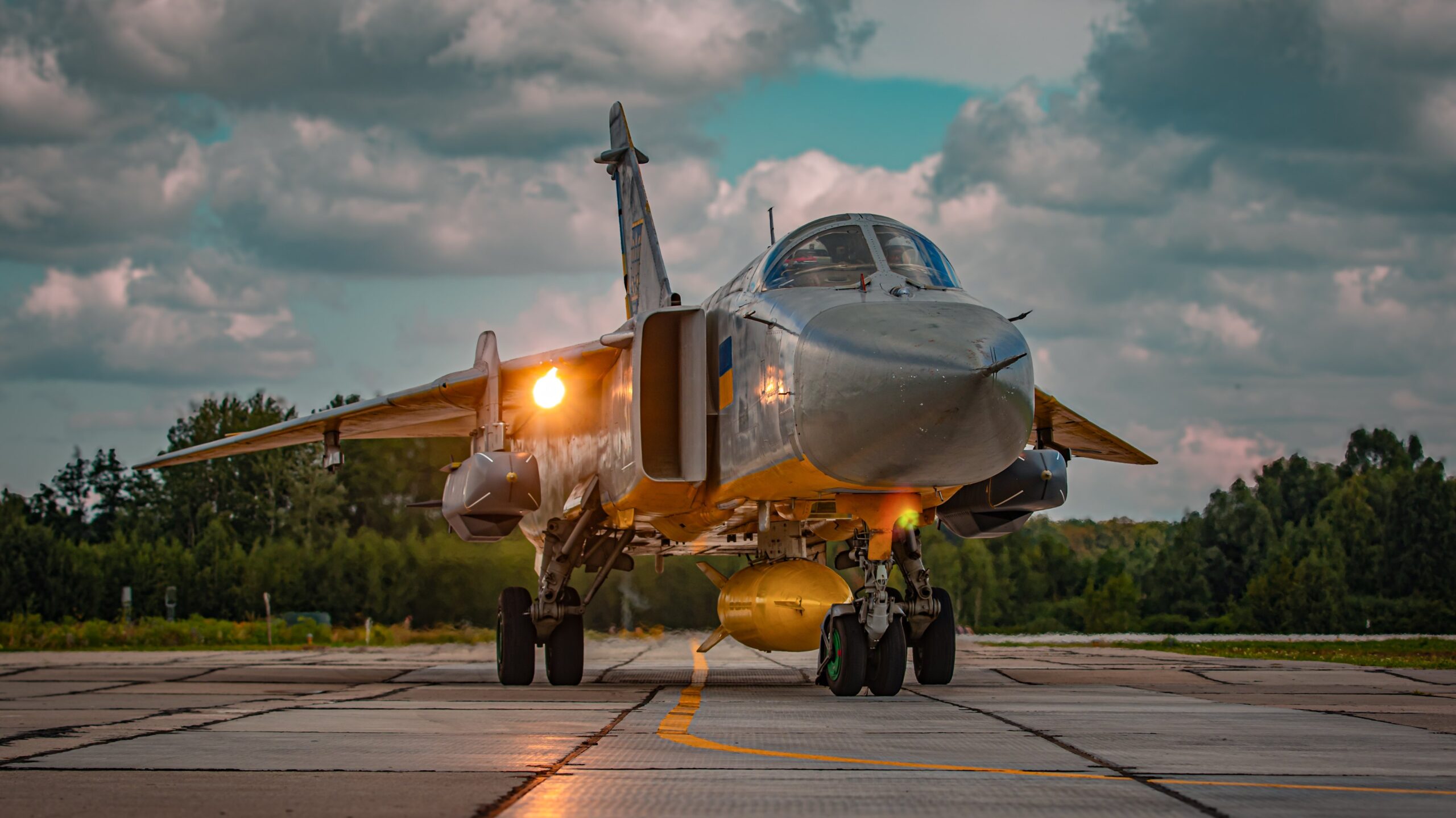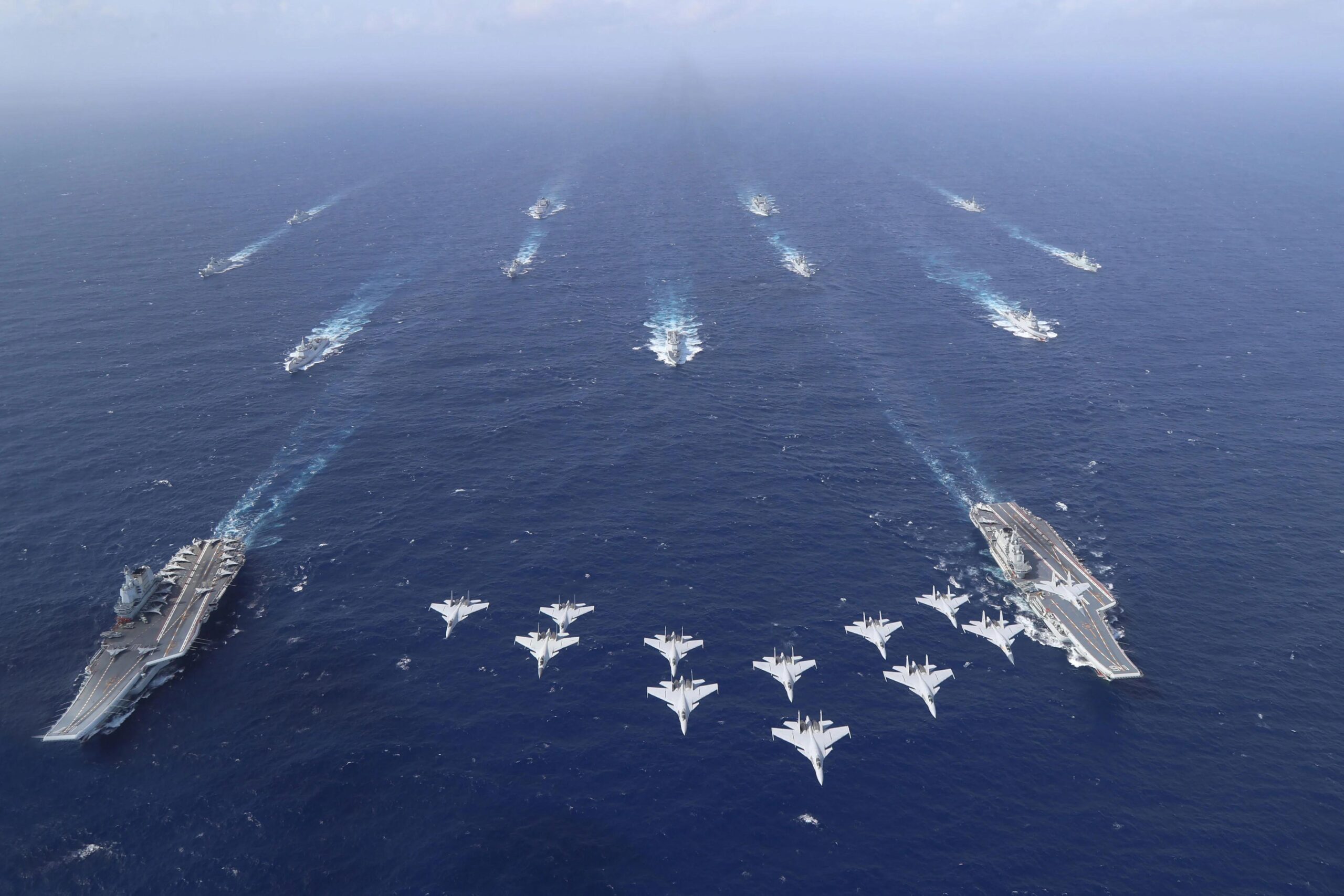GA-ASI’s MQ-9B SeaGuardian delivers unmatched range for large-scale multi-domain operations.
Uninhabited aircraft have changed the world, but they don’t all do it in the same way – and the changes wrought by one system in one area don’t necessarily apply everywhere else.
The mainstream press has given great attention to small battery-powered quadcopters and the role they’ve played in high-profile conflicts around the world. Indeed, there’s a lot of discussion about the way they’ve fundamentally rewritten the rules of war.
Taking a closer look, though, maybe what they’ve done is rewritten the rules of one war, in one place, for one period of time. In another conflict, elsewhere, those little electric systems would be rendered useless.
It’s not so much a question of how clever software becomes, or how many little quadcopters get deployed, or the tactics used to employ them. After a point, the most important question becomes one of physical size: how much energy can an aircraft store to carry it at a certain speed for a certain amount of time to accomplish the work it was tasked to complete?
There’s a point, in other words, past which the forces of innovation run into a brick wall called the laws of physics.
None of this detracts from the significant role small electric systems have played and may continue to play on the world stage. But in assessing the state of the art of unmanned aerial systems and attempting to select the right approach for different applications, it’s critical to be very clear about what various aircraft can and can’t do – and could never do.
A soldier needs to be able to look down past the next ridge – or over a line of buildings into the next city block – and see whether enemy forces are there. A small electric tactical UAS could be perfect for that.
But what if a division commander needs to degrade a hostile integrated air defense system before a big allied combined-arms assault into contested territory? A little quadcopter simply cannot carry the electronic attack equipment for that or release air-launched effects at the start of the offensive.
What if a naval task force commander needs to clear a key strait of hostile submarines? A little quadcopter or similar system can’t haul a payload of sonobuoys to drop and search for them and stay on station for the number of hours required to patrol and then help prosecute the attack.
These and other requirements won’t go away – in fact, if anything, they’ll become more urgent as the technical challenges presented by threat nations continue to compound in the coming years. That’s why large traditional aircraft-style unmanned systems will remain vital.
Coast guards or customs enforcement agency officials need to watch areas of interest nonstop. They need an aircraft that can fly for five hours to a patrol sector and then stay on station there for 10 more hours or longer. And these and other users need a big solid platform to carry relevant payloads, such as sensors, communications equipment, and more.
Only medium-altitude, long-endurance multi-mission patrol aircraft like the MQ-9B SeaGuardian® or SkyGuardian®, built by General Atomics Aeronautical Systems, Inc., can take on these missions. With a gross takeoff weight of around 12,500 pounds, a 79-foot wingspan, and endurance of more than 30 hours, in some configurations, the MQ-9B does things that no small electric system, or combination of them, ever could – in places they could never operate.
The SkyGuardian and SeaGuardian can climb above 40,000 feet and operate under any weather conditions, with built-in lightning protection and integral anti-ice systems. They can carry a maritime search radar, sonobuoys to search for hostile submarines, communications or intelligence payloads, and other sensors, with 45,000-volt amps of onboard power. They can take off and land via automatic systems and integrate into national airspace with their proprietary onboard Detect and Avoid System and much more.
Of course, the SkyGuardian and SeaGuardian aren’t available online or at the local electronics store. Those inside the aviation world understand these aircraft are in a different class and not competitors with small electric UAS. Small novel systems – however they’re being used – are not about to take the place of what the U.S. Department of Defense classifies as “Group 5” unmanned systems.
That’s fine. The presence of electric bikeshare services on city streets didn’t make delivery trucks obsolete. In fact, they don’t really compete. When the conversation turns to unmanned aircraft, however, these are the kinds of comparisons that sometimes are made.
People are making use of UAS at every level to do jobs not only in place of human-occupied aircraft but to tackle challenges that no previous aircraft ever could. But one thing that won’t change is the importance of selecting the right tool for the right job.





















Discussion about this post